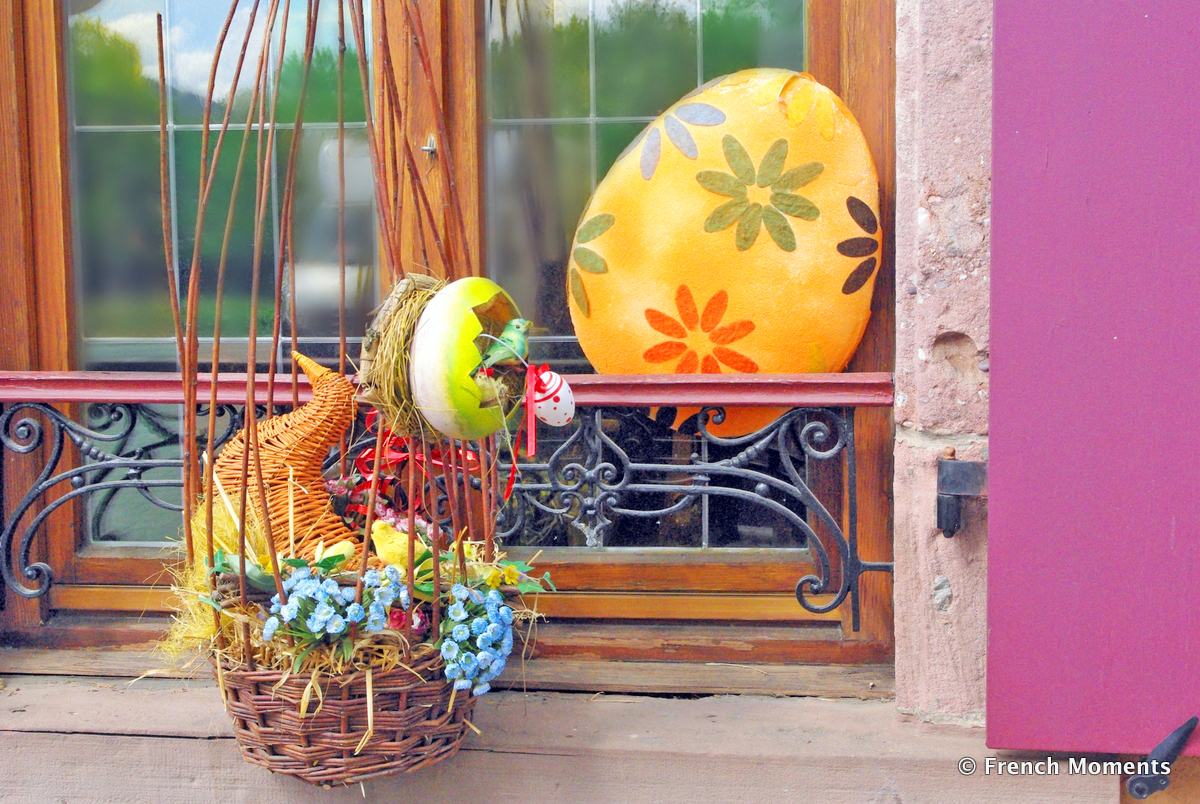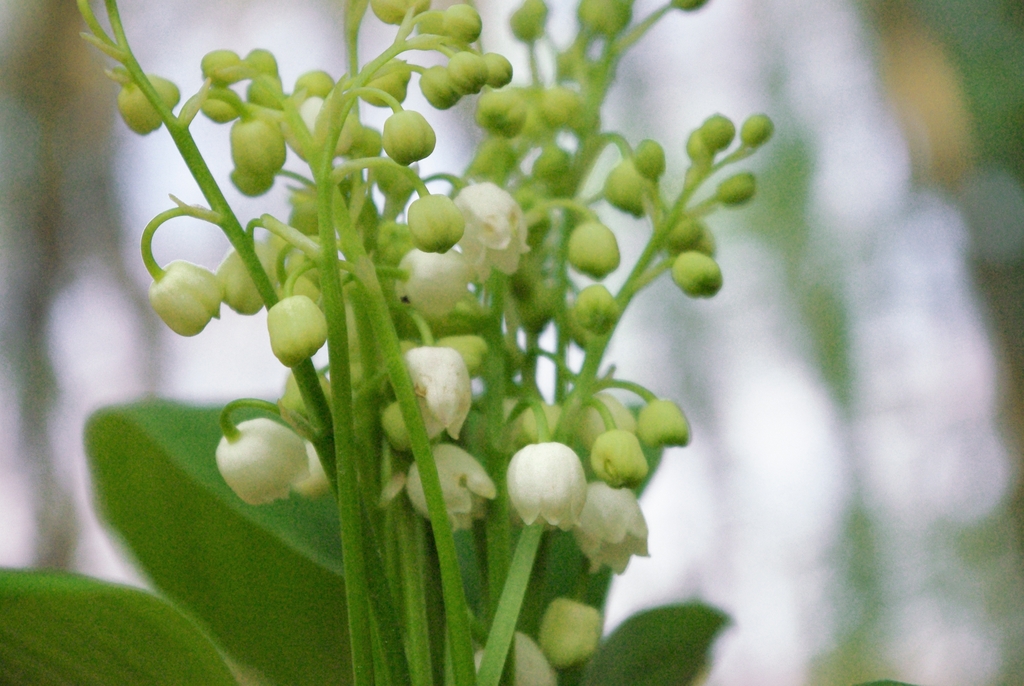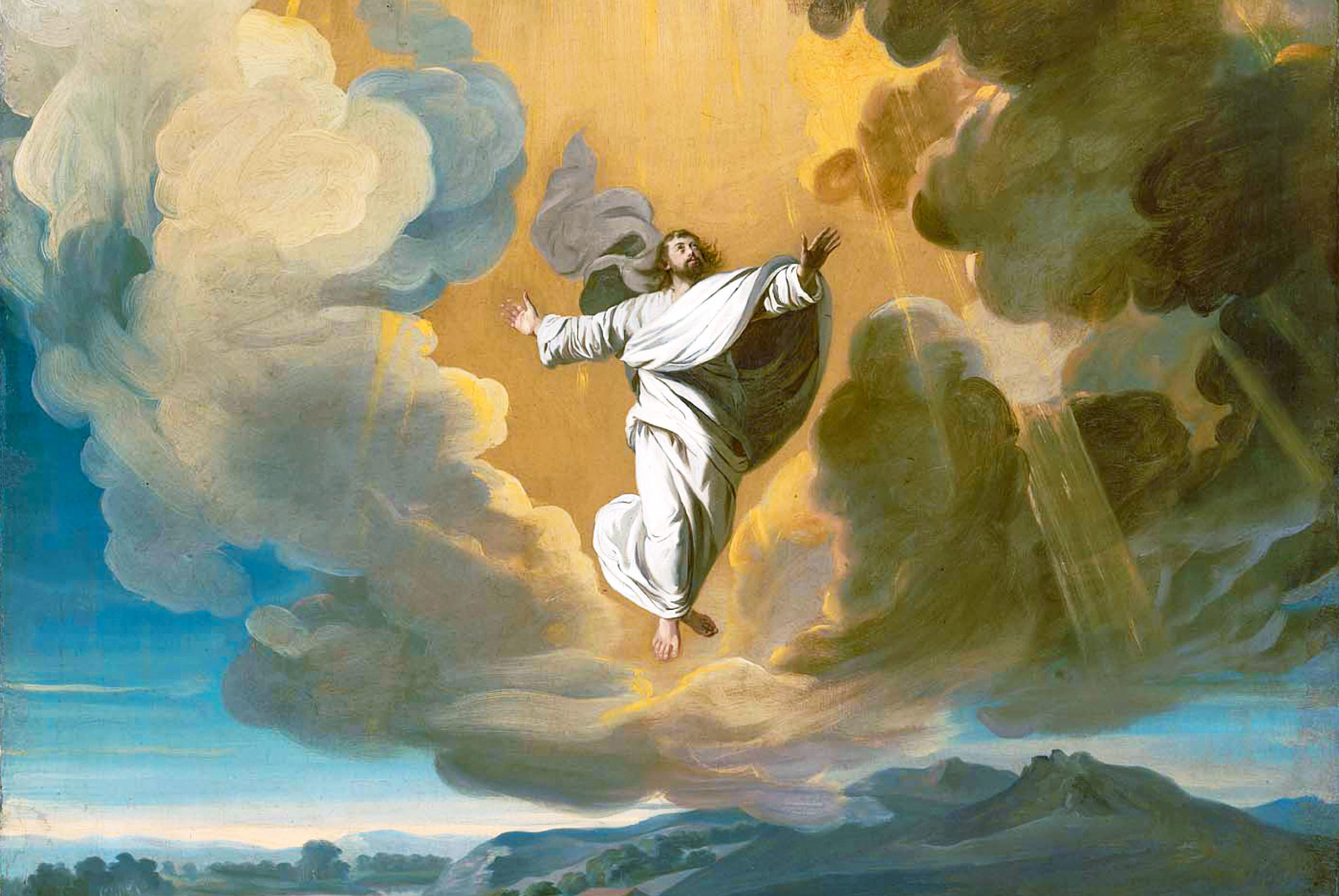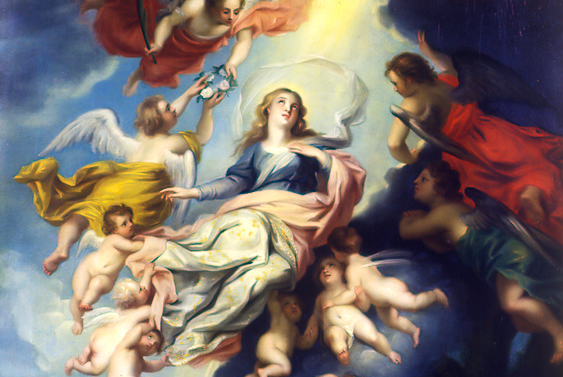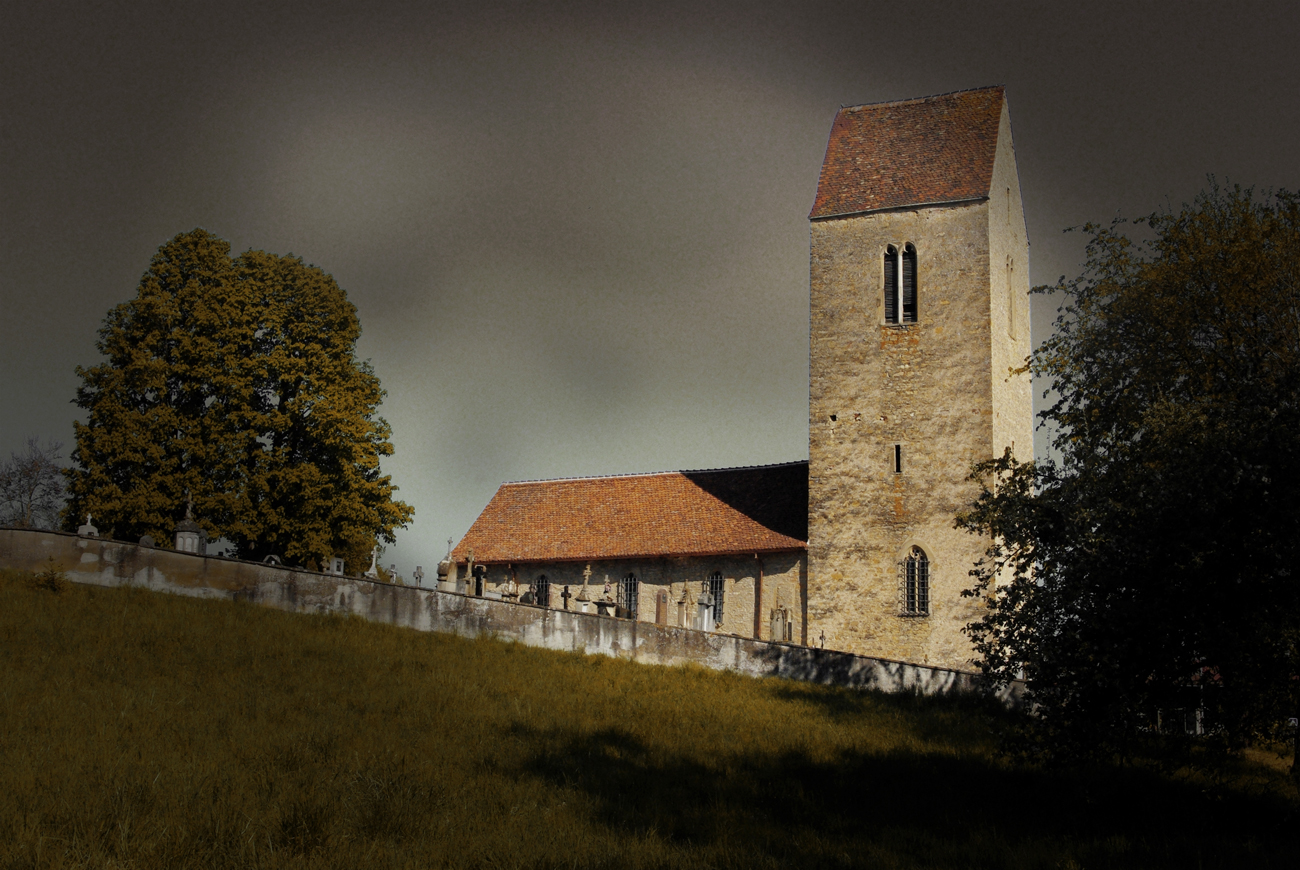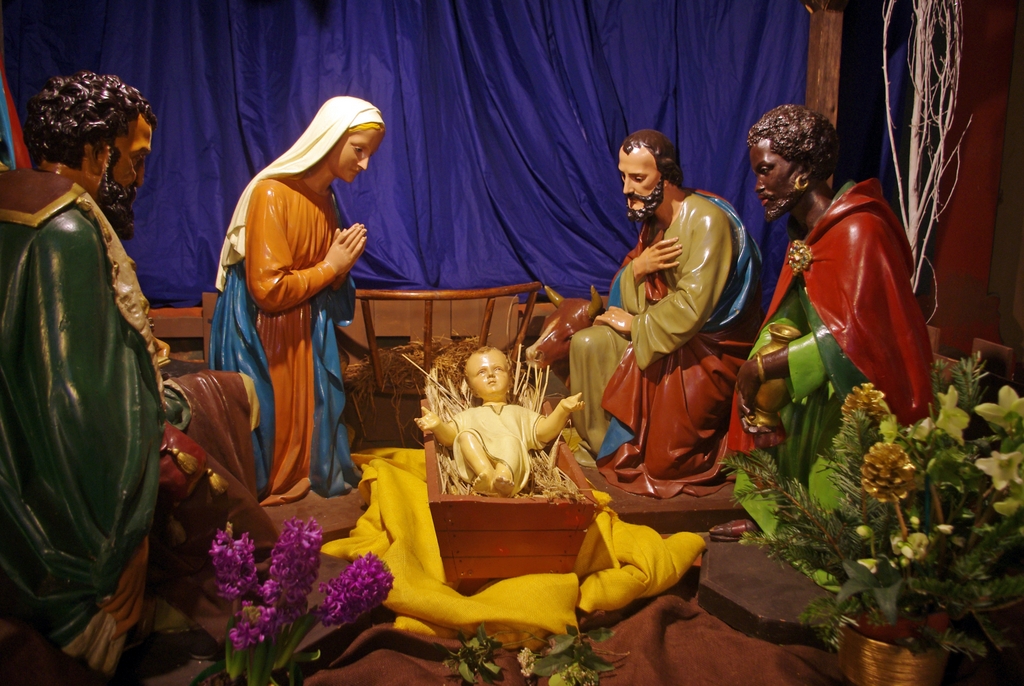In France, Epiphany is synonymous with the “Galette des Rois”. The French ceremoniously eat this wafer king cake a few days before and after 6 January. As soon as Christmas and New Year, with their abundance of food and bûches, are over, it is time to celebrate the Epiphany with the ‘Galette des Rois’. People queue outside the boulangeries-pâtisseries to get the best galette in town and share it among friends and family to see who will win the crown!
🎦 Watch our short video about the origins and traditions of Epiphany ⤵
What is a Galette des Rois?
The “Galette des Rois” is a cake made of flaky puff pastry layers filled with a dense centre of frangipane.
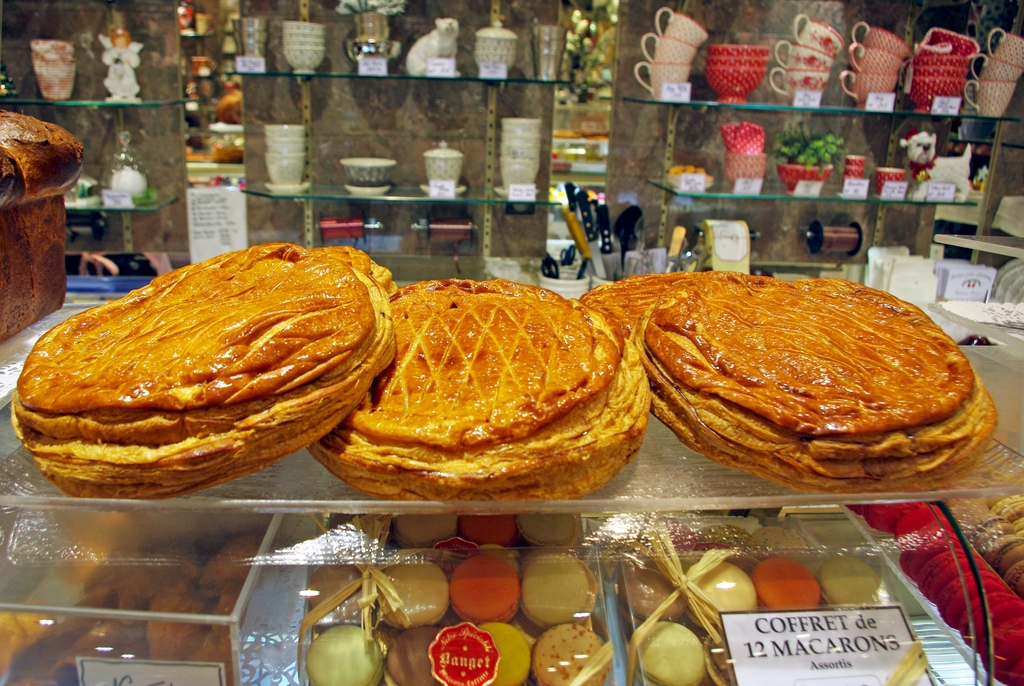
In Provence, the Galette is slightly different and takes the form of a brioche topped with glazed fruit and decorated with coarse sugar crystals. The cake is made with orange blossom, called the ‘Brioche des Rois‘.
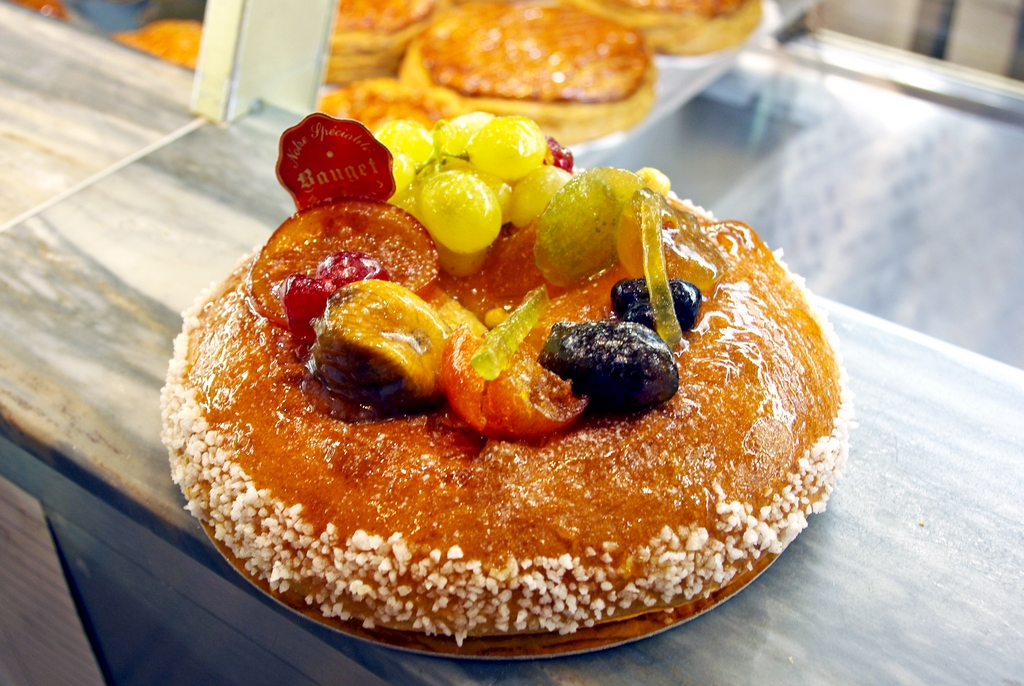
A lucky charm (‘une fêve’ ) is hidden inside, and the person who finds it in their piece of the galette wins the crown and is the king or queen for the day. For French children, the Galette des Rois is a highlight in January.
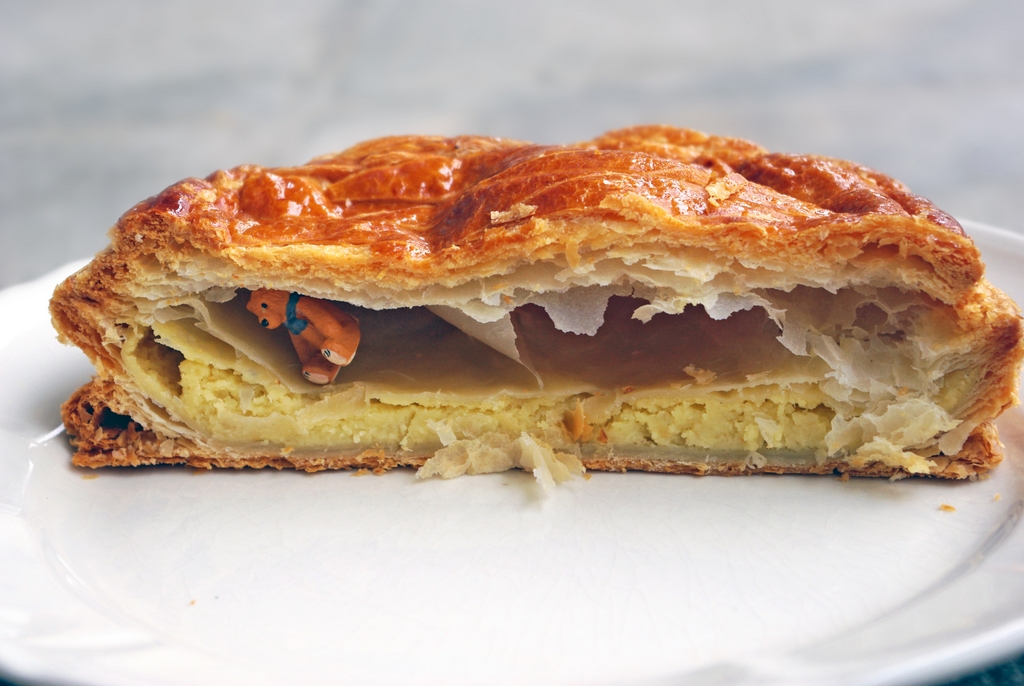
Tradition has it that the family’s youngest member goes under the table to distribute the slices to the people sitting around it. The person who finds the lucky charm in their slice of ‘galette’ becomes the king (or queen) of the day and must choose his/her companion.
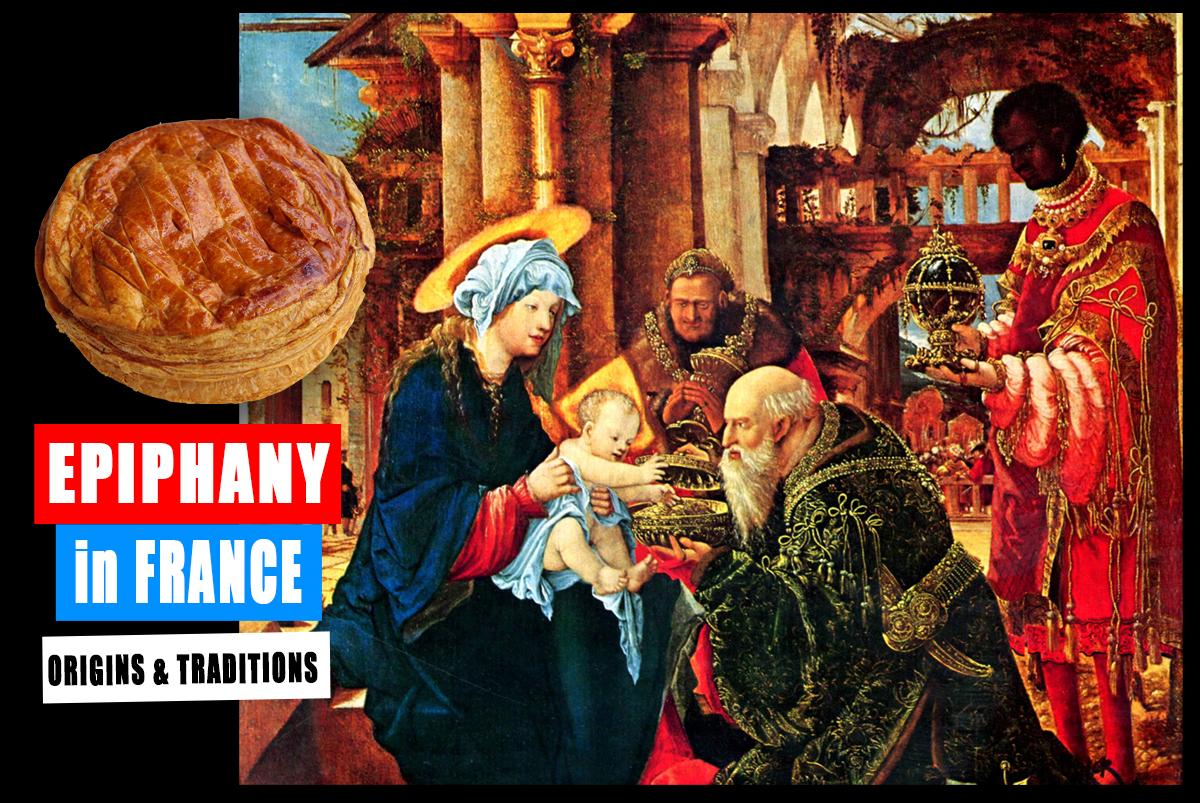
Buying a Galette des Rois at the Boulangerie
When we lived in the Paris region, we had our favourite bakery: Bauget in Maisons-Laffitte. Unfortunately, the bakery closed in 2016, as the owners took a well-deserved retirement.
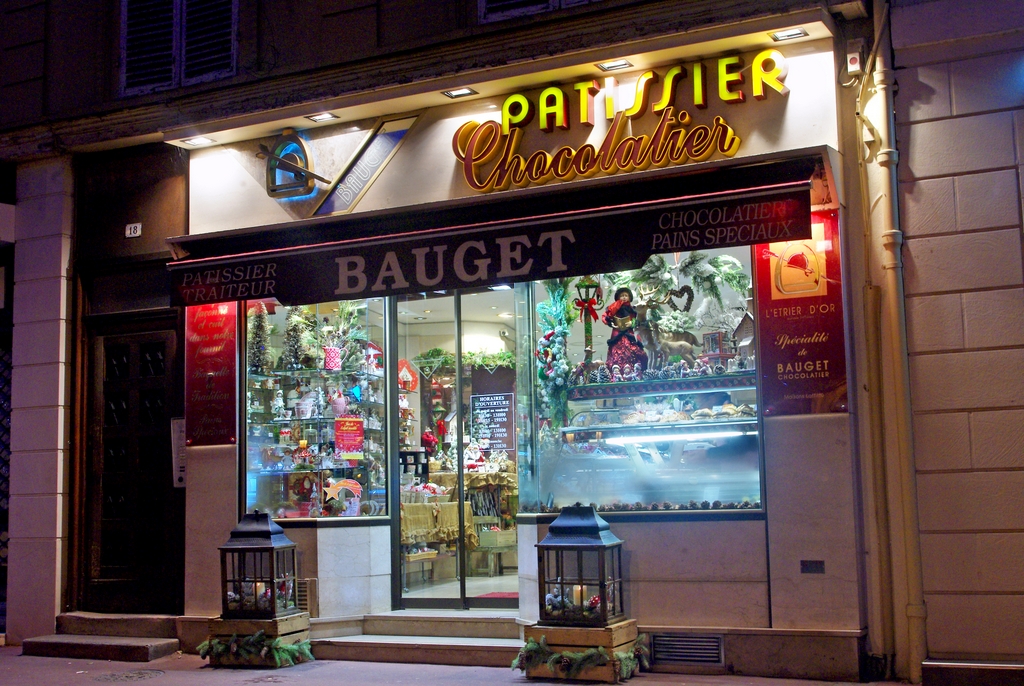
Like all the boulangeries-pâtisseries in France, Bauget followed the Epiphany tradition by preparing various ‘Galette des Rois’ sizes.
Boulangeries-pâtisseries in France try to outdo each other with their Epiphany galettes and/or brioches. They also sell the cake with a paper crown.
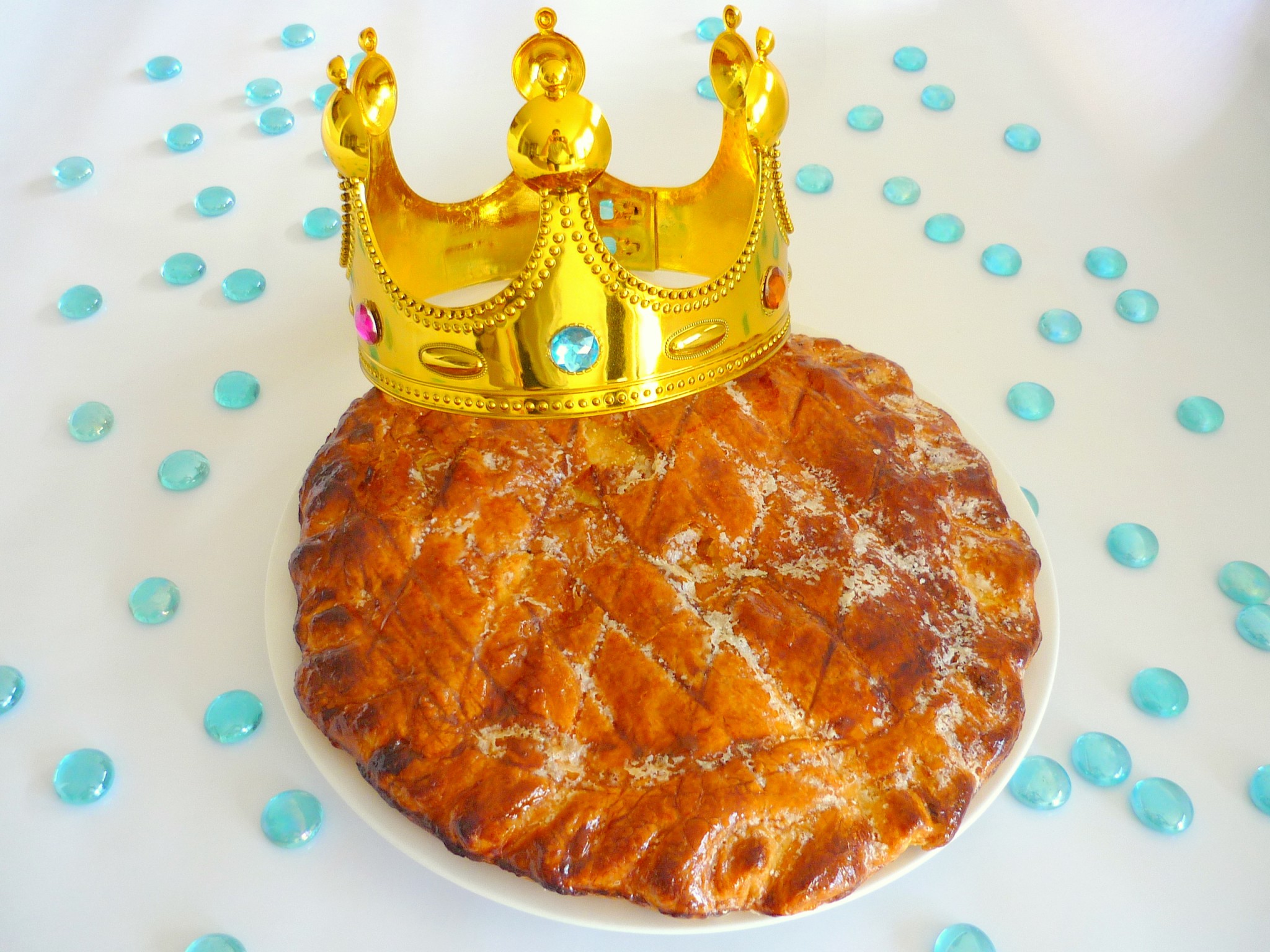
Galette des Rois
Ingredients
- 2 round sheets of puff pastry
- 1 lucky charm dry bean or items sold in bakeries
Almond mixture
- 2 eggs
- 100 g caster sugar
- 100 g unsalted butter good quality
- 1/4 tbsp vanilla extract
- 100 g ground almonds
Glaze
- 1 egg yolk
- 50 g icing sugar
Instructions
- Place one sheet of puff pastry on a greased baking sheet.
- Prepare the almond mixture: soften the butter and add the sugar. Beat vigorously to obtain a smooth texture.
- Add the ground almonds, then the two eggs and the vanilla extract.
- Place the almond mixture in the centre of the round-shaped pastry and spread it evenly up to 2cm away from the edge.
- Add the lucky charm near the edge (if you add it near the centre, it might be easily discovered when cutting the cake!)
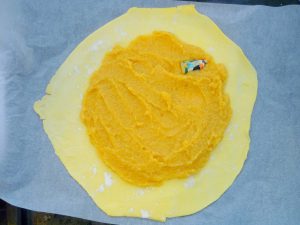
- Cover the base with the second round-shaped pastry and ensure the two pastry sheets are stuck together. Otherwise, the almond mix may slip away from the cake when cooking. You may use water to join the two sheets along the edges.
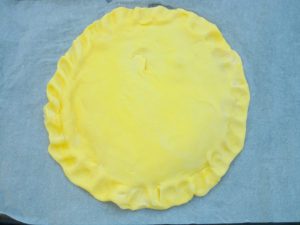
- Make an egg wash with the egg yolk and a little water, and using a pastry brush, brush all over the top.
- Trace decorative shapes (diamonds, flowers or any other creative designs) carefully with a knife. Make sure you don’t press too hard to avoid piercing the pastry.
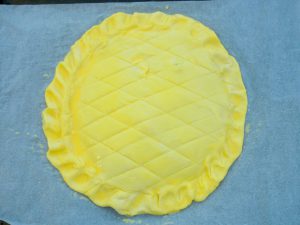
- Preheat the oven to 200 degrees C and cook at 180 degrees for about 40 minutes. Check on it regularly as our oven cooked it much quicker (25 mins).
- Mix the icing sugar with water to make a liquid sugar syrup and spread it over the galette's top.
- Cook the galette for 5 minutes at 200 degrees C to allow the sugar to cook slightly and create a shiny effect. Take it out of the oven.
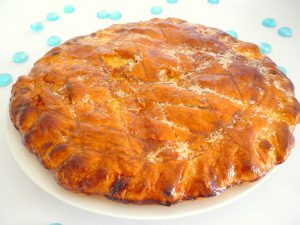
- Eat the cake lukewarmly and enjoy the party!
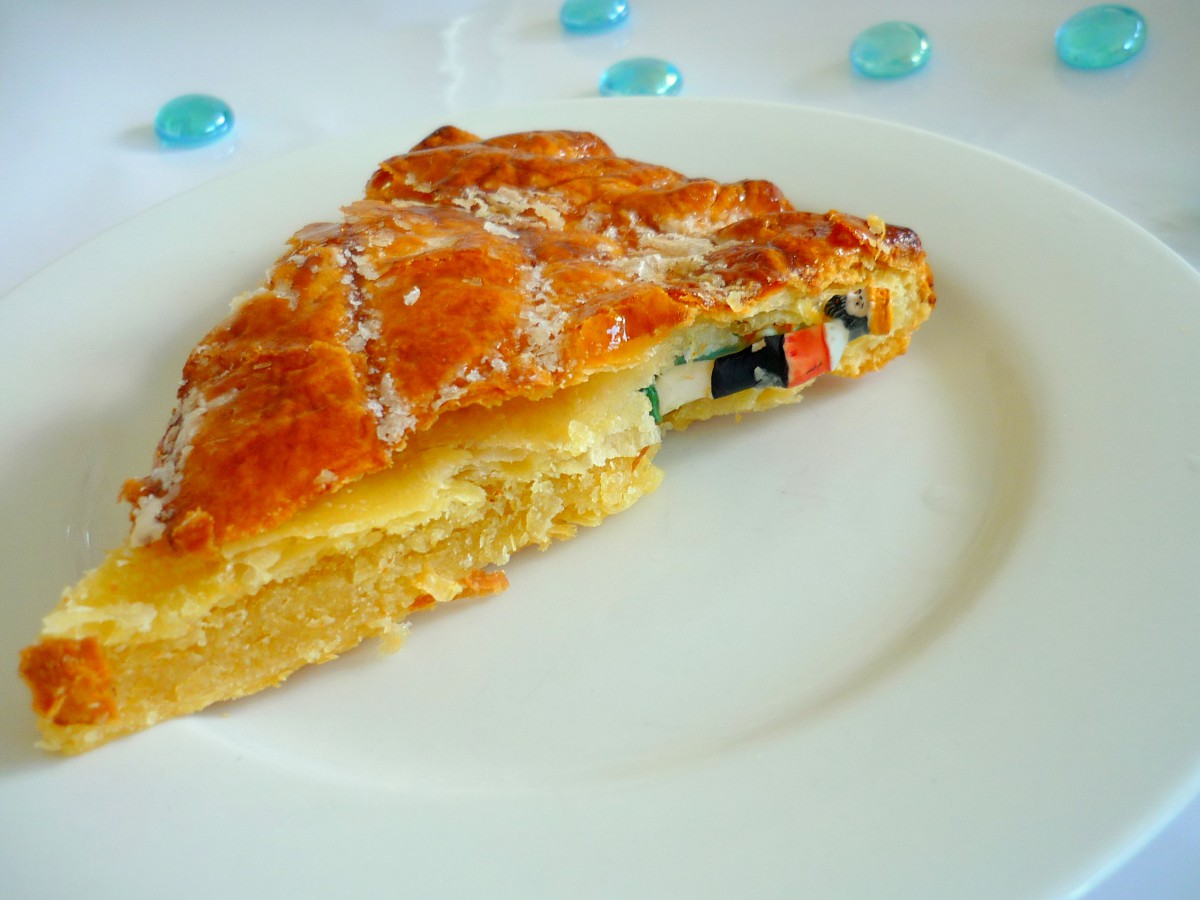
The French tradition of eating the “Galette des Rois”
Tradition has it that, during Epiphany, the family’s youngest member goes under the table to distribute the slices to the people sitting around it.

The person who finds the lucky charm in their slice of ‘galette’ becomes the king (or queen) of the day and must choose his/her companion. In the past, the flat cake was divided into as many slices as there were people around the table, plus one slice in case a stranger or a poor person were to come to the house. This extra portion was called the slice of God (“la part du bon Dieu”).

About the Lucky charm
In the tradition of the Galette des Rois, a small charm (fève) is hidden inside the cake. Historically, this charm was a dry bean. However, over time, the charm has evolved into a small figurine or object, often made of porcelain or, more recently, plastic, and is frequently fashioned into various shapes or themes.
Most bakeries use porcelain or plastic charms for their Galettes today. These charms are collected by many and can range from historical figures to popular culture icons.
If you’re making a Galette des Rois at home, you can choose the lucky charm you prefer. Some people use a dry bean for tradition or simplicity, while others opt for decorative porcelain or plastic charms from cooking stores or bakeries. The important thing is that the charm is small enough to be hidden in the cake without being detected before someone finds it.
Is it healthy to add a fève to the cake?
From a health perspective, there are some things to consider when choosing between a plastic or porcelain charm for a Galette des Rois.
- Porcelain Charms: These are considered safe if not chipped or cracked. Porcelain is an inert and non-toxic material. However, you should ensure that any paints or varnishes used are non-toxic, especially if the charm is old or of unknown origin.
- Plastic Charms: These can be a concern if the plastic contains harmful substances like phthalates or BPA (Bisphenol A). It’s preferable to ensure that plastic charms are made from safe materials for health, in compliance with current regulations.
In both cases, these charms pose no danger as long as they are not ingested. It’s crucial to inform all participants, particularly children, about the charm’s presence in the cake to avoid any risk of choking or accidental ingestion.
In summary, we can consider both charms safe if manufactured to safety standards and not ingested. However, consider using a dry bean or another natural seed for a more traditional and eco-friendly option.
Pin the Galette des Rois and Epiphany
Did you like what you read? If so, share it on Facebook and Twitter, or pin this image on Pinterest:
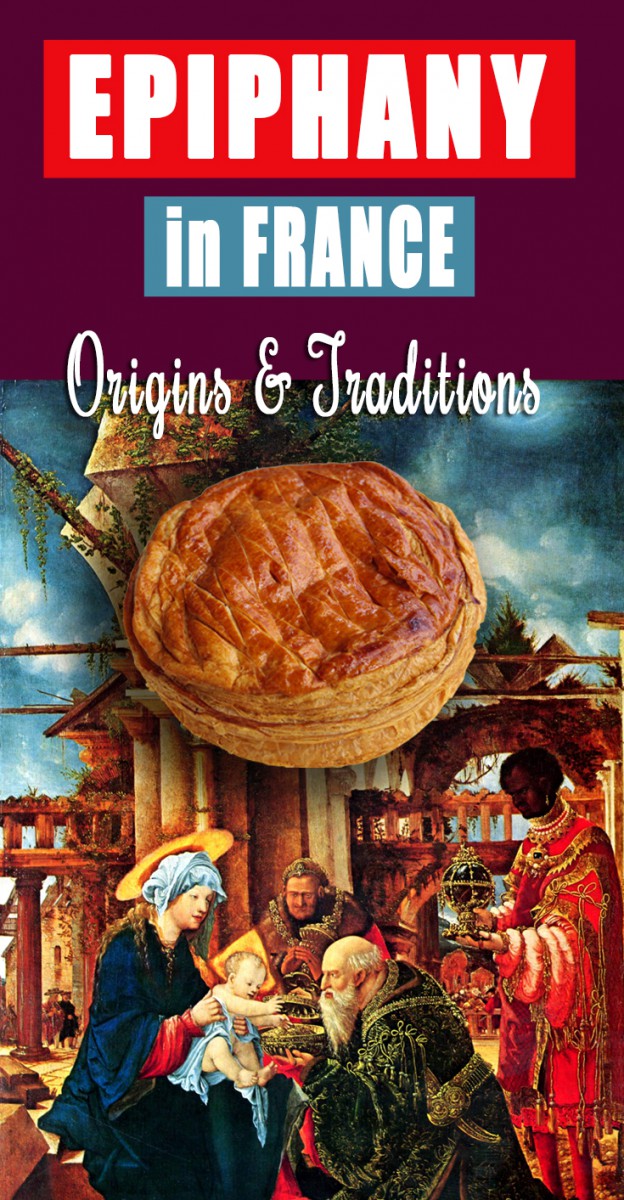
Find out more!
- Check out our article about Epiphany in France: Origins & Traditions!
- Read more about Epiphany in French on our Mon Grand-Est blog!











